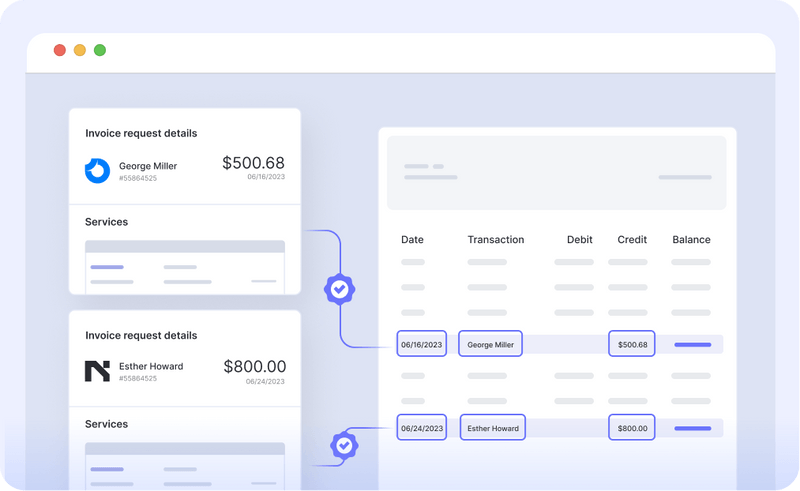Despite the growing popularity of instant messaging services, Email continues to be an important mode of communication, especially in the business scenario. In 2023, 4.37 billion people around the globe sent 347.3 billion emails every day. The working of email is fairly simple – when an email is sent, it is initially directed to the Simple Mail Transfer Protocol (SMTP) for verification and storage. If the recipient has a different domain, SMTP communicates with the recipient’s domain name server (DNS) for delivery, handling network issues by queuing or returning undelivered messages.
SendGrid is a cloud-based SMTP service that helps businesses handle multiple, large and bulk emails.
Let us learn more about SendGrid and its features in this article.
What is SMTP?
SMTP, or Simple Mail Transfer Protocol, is like a digital postman for emails. When you send an email, SMTP helps in directing it to the right place (like Gmail or Outlook) and ensures it gets delivered to the recipient’s email server. It’s the behind-the-scenes system that makes sure your emails find their way to the correct inbox.
Using a generic or random SMTP service is associated with certain risks, especially for businesses that need to send out marketing mails to potential and existing cusotmers. In such cases, marketing emails can become flagged as spam and end up in our customers’ junk folders. This can be avoided by using a reliable third-party SMTP SaaS. SendGrid is one such application in the transactional email sector, which ensures effective email delivery.
What is SendGrid?
SendGrid, a cloud-based SMTP service, is a platform for sending and managing emails, catering to businesses and developers for bulk email delivery in applications and websites SendGrid’s mail servers enable users to send large volumes of emails, saving time and effort compared to manual methods. SendGrid provides features like email templates, analytics, and scalability, enhancing the ease with which businesses can integrate email functionality into their applications and communication strategies.
Features of SendGrid
SendGrid provides an intuitive editing tool for creating responsive email templates with customizable fields. Its advanced campaign management allows for effective contact segmentation based on engagement metrics and customer data. Moreover, Twilio SendGrid ensures optimized email delivery through domain authentication, compliance features, and proactive ISP outreach.
Some specific features that cater to various email marketing requirements are:
- SendGrid enables effortless management of large email campaigns with high deliverability rates. Unique features like integrated email tests, spam testing, email validation, and dedicated IP addresses set it apart, ensuring optimal email delivery even in large-scale marketing initiatives.
- SendGrid facilitates easy setup of transactional emails for online products or eCommerce sites. Transactional emails, triggered by specific events like transactions, provide essential information such as account confirmation, payment receipts, updates, and notifications. SendGrid’s API and SMTP service streamline the automation of transactional emails, capitalizing on their high open rates.
- Promotional emails may be easily setup with SendGrid. The platform offers a library of built-in email templates for quick drafting and personalization. Alternatively, a versatile HTML editor and drag-and-drop editor accommodate users who prefer to build emails from scratch, allowing management of audience targeting, A/B testing, and content customization.
- SendGrid provides real-time tracking across key metrics, including emails delivered, unique opens and clicks, bounce rate, spam reports, and unsubscribes. This robust reporting mechanism allows businesses to gain valuable insights into email performance, analyze audience behavior, and export data for further customization and analysis.
- SendGrid supports seamless integration with popular tools such as Zapier, Airtable, Twilio, and Google Cloud Platform, enhancing overall productivity. Its robust SMTP API and web API enable easy custom integrations, empowering businesses to connect SendGrid with various tools and address diverse business needs, from list management to email sending. The platform’s versatility ensures a cohesive and efficient email marketing experience, integrating seamlessly with existing software ecosystems.
Other useful features include robust A/B testing, mailing list management, predefined templates, an image library, and comprehensive reporting tools.
SendGrid for Email Automation
Automated emails, generated in response to users’ actions on a website or web app, serve as a real-time, personalized communication channel, enhancing customer engagement, retention, and loyalty. They also bridge the gap between transactional emails that are limited in promotional content and traditional marketing emails that lack the individualized touch.
SendGrid allows marketers to effortlessly send user-specific emails, combining the immediacy of transactional communication with the personalized marketing emails. Examples include welcome series, nurture series, celebratory emails, and user verification messages.
SendGrid generated automated emails are triggered by user actions, making the content highly pertinent and relevant to the user.
Optimizing SendGrid Workflows with Nanonets
In addition to the robust features and benefits of SendGrid, businesses can further optimize their email workflows by integrating SendGrid with Nanonets for free. Nanonets offers seamless integrations and automated workflows that enhance the functionality of SendGrid, making it more efficient and effective in various business scenarios. Here are the top 10 popular workflows based on their utility and popularity:
- SendGrid-Shopify Integration: This workflow automates email campaigns and e-commerce strategies by connecting SendGrid seamlessly with Shopify, enhancing customer engagement and sales conversion.
- SendGrid-Lusha Workflow: Integrating Lusha with SendGrid, this setup streamlines the process of managing efficient email campaigns, leveraging automated workflows for effective customer outreach.
- SendGrid-HubSpot Integration: This powerful combination integrates HubSpot with SendGrid, ensuring a smooth transition from marketing strategies to email automation for effective lead management and follow-up.
- SendGrid-Monday.com: Enhance project communication by connecting Monday.com with SendGrid, enabling automated emails based on task status changes.
- SendGrid-Pipedrive Workflow: Streamline your Customer Relationship Management (CRM) and email campaigns by integrating Pipedrive with SendGrid, boosting engagement and communication efficiency.
- SendGrid-Salesforce Integration: Automate emails triggered by Salesforce events with this workflow, enhancing CRM communications and customer interactions.
- SendGrid-ShipStation Connection: Optimize order fulfillment communications by integrating ShipStation with SendGrid, streamlining shipping processes and enhancing customer satisfaction.
- SendGrid-Stripe Workflow: Link SendGrid with Stripe to automate payment notifications and receipt transfers, simplifying financial communications.
- SendGrid-Typeform Integration: Connect SendGrid to Typeform to automate survey participation and response collection, enhancing data gathering and analysis.
- SendGrid-Webhook Automation: Streamline email event processing by automating actions from SendGrid to Webhook, enhancing efficiency and responsiveness in communications.
By leveraging these integrations, businesses can significantly improve their email communication strategies, ensuring more personalized, timely, and effective outreach to customers. The seamless integration provided by Nanonets with SendGrid’s powerful email platform paves the way for innovative and efficient digital marketing solutions.
For more details on these workflows and how to implement them, you can visit Nanonets’ official website.
Benefits of SendGrid
The benefits of using SendGrid for email automation are manifold, driving loyalty through personalized onboarding, improving retention by fostering valued customer relationships, boosting revenue through timely prompts, and prompting desired actions from users already engaged with the brand.
- Lower Cost Outsourcing email to a cloud-based mail server is a more cost-effective solution than maintaining an in-house infrastructure. Considerations include staffing, hardware, software, maintenance, storage, and additional channels like mobile, with outsourcing offering significant savings, especially as the business expands.
- Easy Updates: Centralized software updates and configurations streamline the process, eliminating the complexities associated with managing updates across multiple systems. This centralized control saves time and resources, allowing for efficient and hassle-free system-wide upgrades.
- Easy and fast implementation: Adding users is easy with cloud-based mail servers such as those of SendGrid. This feature is particularly advantageous for companies experiencing continuous growth and regularly adding large volumes of users.
- Resource allocation: By outsourcing email to SendGrid, businesses benefit from the expertise of a dedicated team. The external email operations team at SendGrid focuses on aspects such as email deliverability and general email management issues, providing a specialized skill set that may be challenging to maintain in-house.This frees businesses to redirect internal resources toward core competencies. IT professionals can concentrate on product delivery while SendGrid takes care of the email communication.
- Scalability: SendGrid offers scalable solutions, allowing businesses to adjust their email infrastructure in response to changing requirements. This scalability is driven by the capability of the email system to adapt to increased workloads and demands.
- Flexible payment options: Instead of facing upfront expenses for hardware and software, outsourcing to SendGrid enables a pay-as-you-go model. Companies can pay for the services they need in the present, with the flexibility to scale up based on actual demand rather than projected needs, resulting in immediate cost savings.
Drawbacks of SendGrid
Most users appear to point out two drawbacks in the use of SendGrid. Firstly, the Free and Basic plans, though cost-effective, lack essential features such as marketing automation for over 6,000 emails per month and multiple-user access, requiring businesses to opt for the more advanced, potentially less affordable plans. Secondly, the interface proves non-intuitive for newcomers, with certain crucial features not immediately visible, necessitating navigation through various menus. This lack of user-friendliness can lead to additional time and effort in email management, diverting resources from more critical tasks for users unfamiliar with the platform.
How to setup SendGrid
Here’s a brief guide to setting up and using SendGrid. For more details, refer to the documentation and guides provided by the developer.
To set up SendGrid, begin by creating an account on the SendGrid website, opting for the free level initially. As your email list grows, you might consider higher subscription tiers for additional features. Once logged in, access the default dashboard view and proceed to “Settings,” then choose “Sender Authentication.” Here, you specify email accounts allowed to send emails. For a custom domain, set up Domain Authentication; for personal addresses like Gmail, use Single Sender Authentication.
To send emails through SendGrid’s API, generate an API key by selecting “Settings” and then “API Keys.” Create a key, define its permissions, and save it securely. Use this key to set up the code for the /mail/send endpoint, either manually or with SendGrid’s Node.js package.
For dynamic content, SendGrid offers Dynamic Templates. Access “Email API” and then “Dynamic Templates” from the dashboard. Create a template, add versions, and use placeholders like {{name}} in the content. Test data can be added in the “Test Data” tab.
Monitoring undeliverable emails is crucial. Track blocks, bounces, and spams through SendGrid’s API or dashboard views. Blocks occur when emails are rejected due to recipient email provider policies. Bounces happen when the email server receives but returns the email. Monitoring spam reports is vital to maintaining sender reputation and ensuring emails aren’t marked as spam by recipients.
Take away
SendGrid helps businesses effortlessly maintain and expand their customer base. With its user-friendly interface, dynamic templates, and robust campaign management features, SendGrid empowers businesses to craft personalized and engaging email campaigns. SendGrid can help businesses foster lasting connections with their audience, providing timely and relevant information that strengthens customer loyalty.



